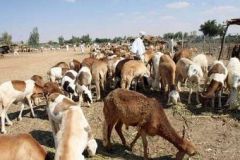Sudan denies Rift Valley Fever in animals
November 10, 2007 (KHARTOUM) — Sudan on Saturday denied there were any confirmed cases of Rift Valley Fever in animals, after almost 250 human cases were recorded with a death rate of about 30 percent.
 The disease could devastate livestock in the country where much of the population relies heavily on cattle farming. But Sudan’s minister for animal resources said there were no clinical signs of the virus.
The disease could devastate livestock in the country where much of the population relies heavily on cattle farming. But Sudan’s minister for animal resources said there were no clinical signs of the virus.
“(An) investigation team conducted an epidemiological investigation and surveillance and did not come across any clinical symptoms to indicate an epidemic of Rift Valley Fever disease,” minister Gutluak Deng told reporters.
Clinical signs usually show a high rate of abortions or deaths of young lambs. In animals other than sheep, however, the disease often shows no symptoms, according to the World Organisation for Animal Health.
The minister said 329 samples had been taken from the suspected infected area in While Nile state, and had been sent to South Africa for final tests. Results were expected in the next week
In humans, at least 84 have died from almost 250 cases showing haemorrhagic fevers in the White Nile, Sennar and Jazeera states.
The death rates in haemorrhagic cases, where patients bleed from the nose and ears and have bloody faeces and urine, can be as high as 50 percent, the World Health Organisation says.
Journalists chided the ministers of health and animal resources for waiting too long to confirm that the outbreak was Rift Valley Fever.
WHO had said in mid-October it was investigating an epidemic of haemorrhagic fever which had killed 30 people in Sudan and confirmed it as Rift Valley Fever on Nov. 2.
The virus is transmitted by animals or mosquitoes to humans. There is no human to human transmission.
(Reuters)
